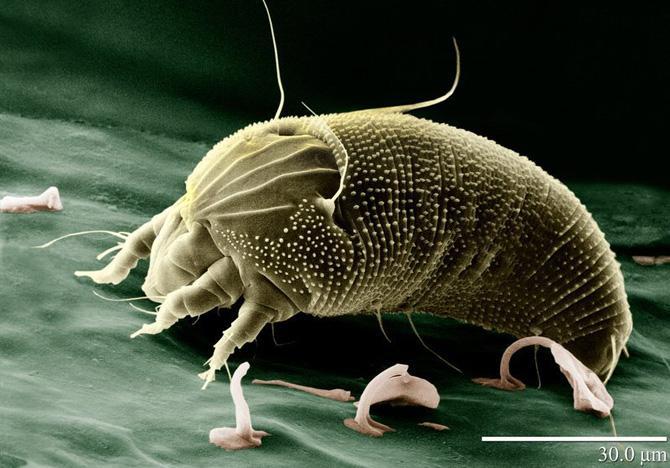
This mite is from a species called Funkotriploynium iagobadius, found in Australia in 1997. This photo of an American species is very similar to that of the funky one. Photo contributed by USDA
Apart from the permanent place in the hearts of many, pop-diva Beyoncé Knowles has gained her immortal position in the entomology dictionary. Surprised? A newly discovered horsefly has been named after the pop star, by a group of taxonomists at the Australian National Insect Collection. The art of nomenclature is a significant field in the science of classification and taxonomy. The horsefly is not the first of its kind to be named after a celebrity.
According to Arthur Bogan , the research curator of the North Carolina Museum of Natural Sciences, many species of newly discovered zoological and botanical organisms are named after family members, friends of the discoverer, popular figures like former President Bush or the 1965 American Rock Band the Grateful Dead, and others. Bogan has recently described a new species of freshwater mussel for the Gulf Coast in Alabama and has a new species description in press for a new genus and species of freshwater clam from a Triassic deposit near Raleigh. N.C . State’s entomologists Lew Dietz and Brian Wiegmann have been working on describing newly discovered leaf hoppers and flies.
“The discoverer and author of the species determine the name of the species. There are separate codes of nomenclature for plants, domesticated plants, viruses, bacteria and zoology,” Bogan said. “As long as the discoverer abides by the code, he has the privilege of naming his discovered species.”
Like most of the standard bodies, for every subject of science, the science of zoological nomenclature is administered and governed by the International Commission on Zoological Nomenclature. The ICZN finally approves the binomial name given to any zoological species, after going through the abidance of the rules as stated in the code of zoological nomenclature, composed by the ICZN , under some fellow institutions in 1999.
Steve Tracy is a zoologist and a researcher working at the ICZN in the United Kingdom and is an expert in taxonomy and binomial nomenclature.
“The ICZN acts as adviser and arbiter for the zoological community by generating and disseminating information on the correct use of the scientific names of animals,” Tracy said. “The ICZN is international and covers all aspects of nomenclature of animals. The code of zoological nomenclature is today published in English and French with translated editions available in German, Spanish, and Russian.”
The science of nomenclature has a great history which dates back to 1753, with the first publication of Linnaeus’s Species Plantarum . “The origin of the nomenclature system we use today was developed and refined by Carl Linnaeus of Sweden. This is binomial nomenclature that is based on just two names for a plant or animal, the genus name and the species name,” Bogan said. “Prior to Linnaeus , scientific animals and plants were described with a descriptive Latin phrase, often rather long. The binomial nomenclature system discovered by Linnaeus made it much easier to remember these names and keep a record of various species, from all around the world.”
Tracy said there is also another organization used for botanical nomenclature, the International Commission of Botanical Nomenclature, based in the Slovak Republic.
According to Bogan , new horsefly species are named in a few different ways. “They can be named for a diagnostic feature of the new species like the yellow rump of the fly named for Beyoncé , or to honor the person who first collected the specimens used for the description, a wealthy benefactor, a loved one etc.” Bogan said. “The list is only limited by being socially acceptable and meeting the rules of the code of nomenclature on the form of the name. Names are either of Greek or Latin origin or Latinized.”